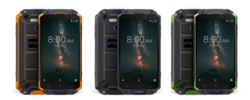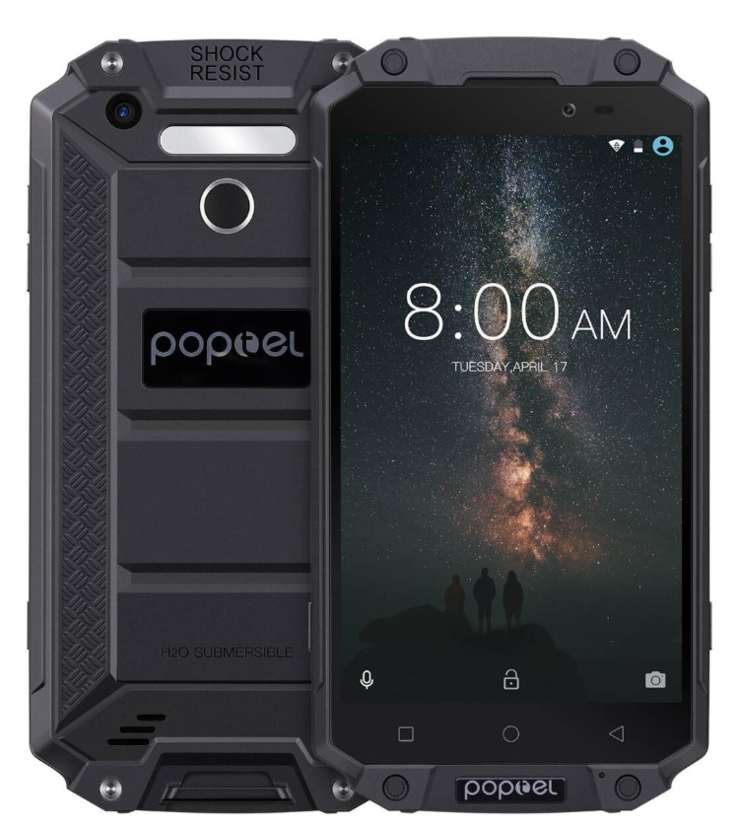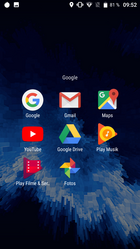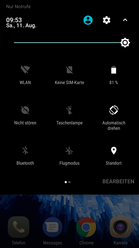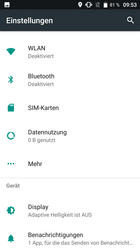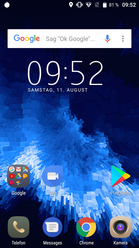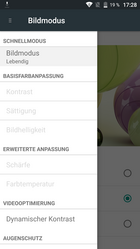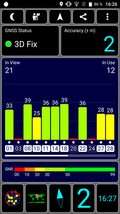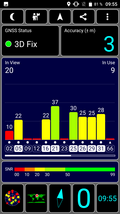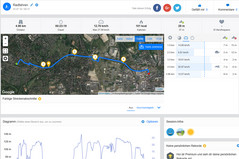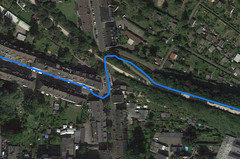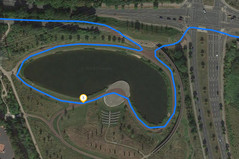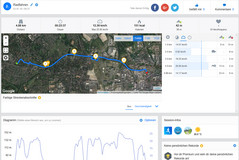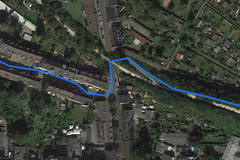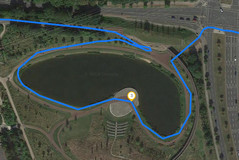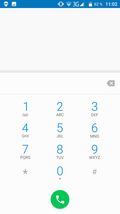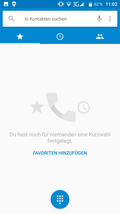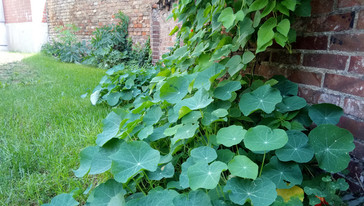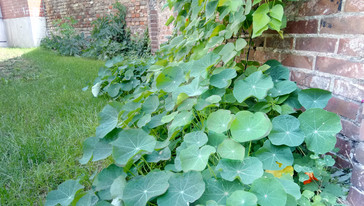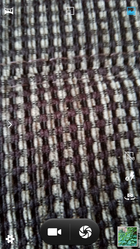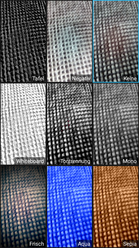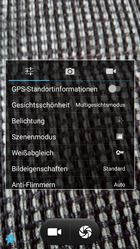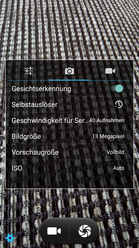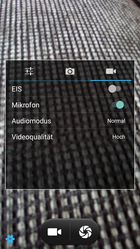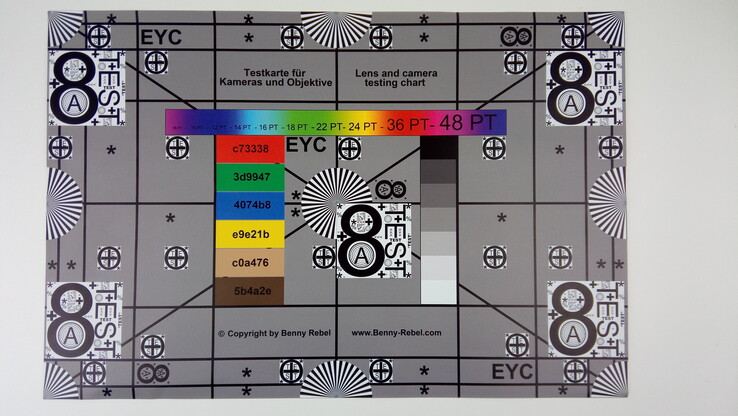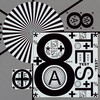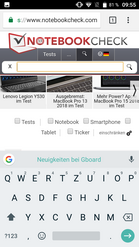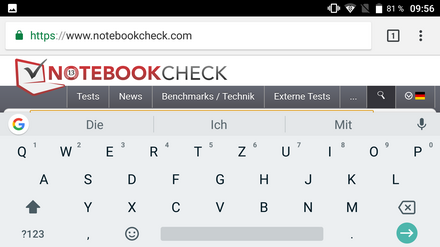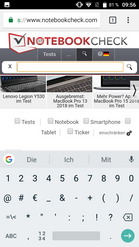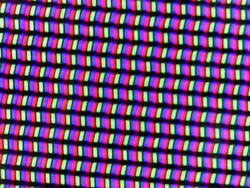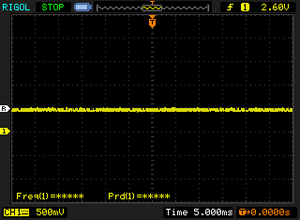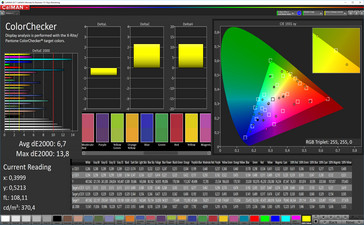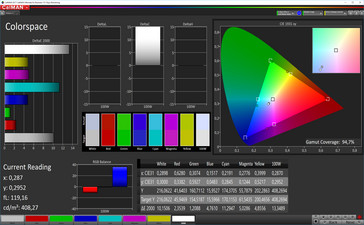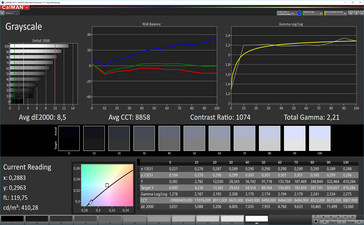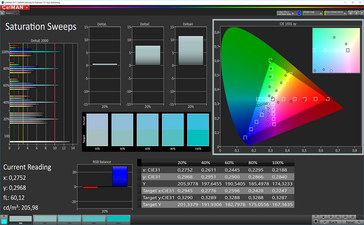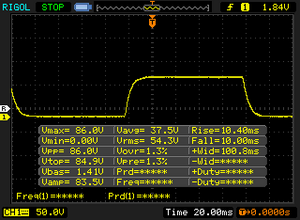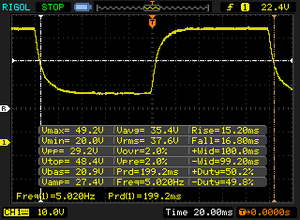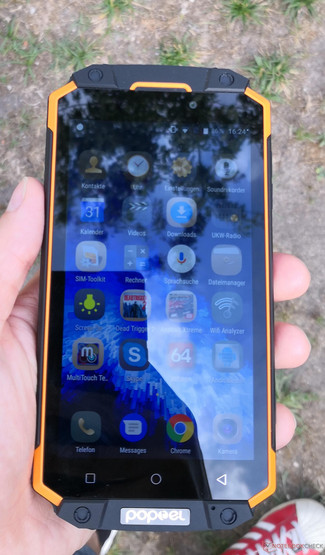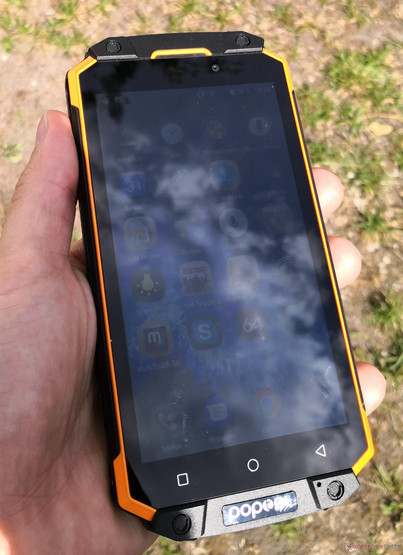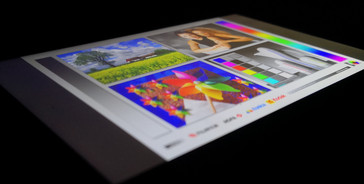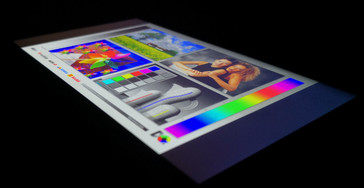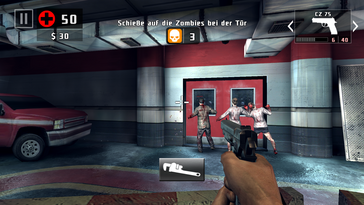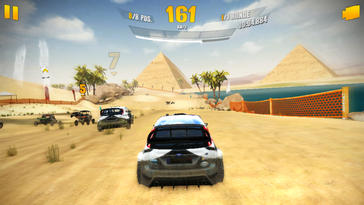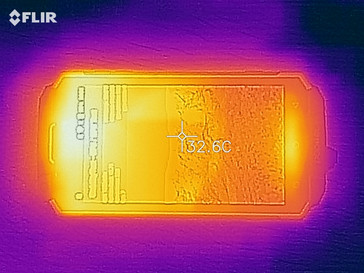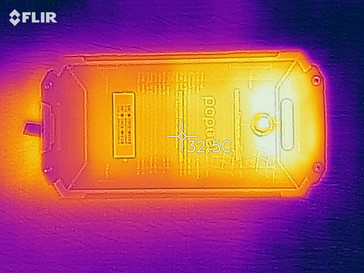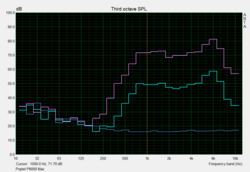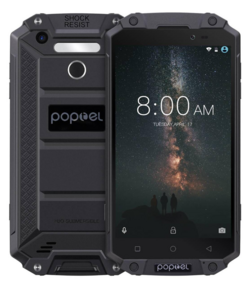Poptel P9000 Max Smartphone Review
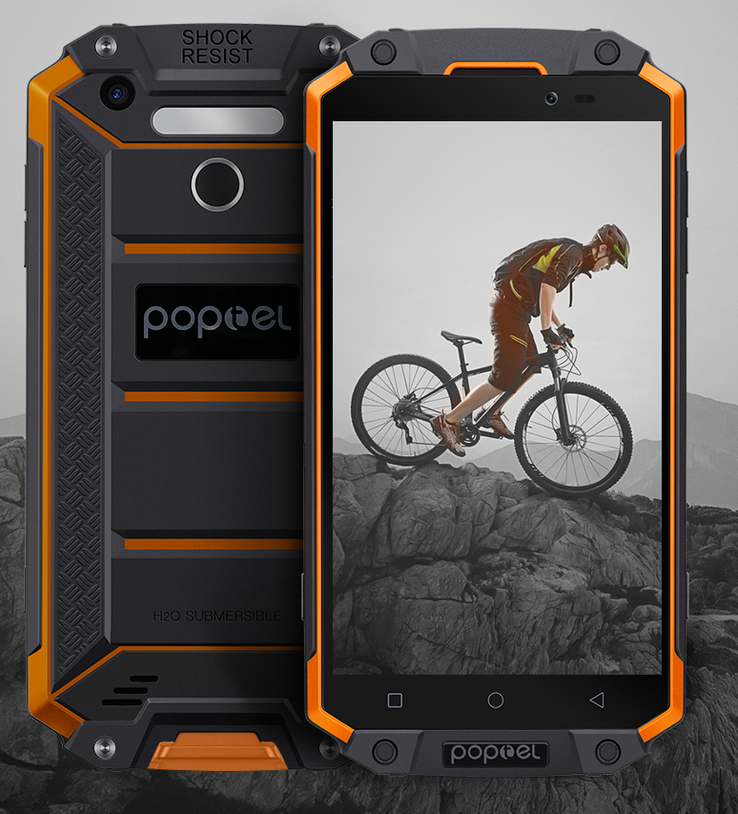
Special situations such as a construction site, camping, or hiking in the mountains require particularly rugged smartphones. The P9000 Max by the Chinese manufacturer Poptel is exactly that. With its IP68 certificate, it is protected from both water and dust. Supposedly, the Poptel phone can also resist drop heights of up to 1.5 meters (~5 ft) thanks to the rubberized coating on its case.
The P9000 Max is equipped with a 5.5-inch FHD screen with a resolution of 1920x1080 pixels, 4 GB of RAM, 64 GB of internal storage, and a MediaTek MT6755 octa-core processor. At a capacity of 9000 mAh, the battery also offers the possibility to charge external devices, serving as a powerbank.
The current street price for this Poptel smartphone is around 200 Euros (~$231). The competition for this dual SIM smartphone includes the Ulefone Armor X, the Blackview BV9000 Pro, and the Cubot King Kong. The CAT S31 and the Samsung Galaxy XCover 4 are suitable for outdoor use and construction sites as well, but they are in an entirely different league in terms of pricing. Because of their particularly long battery lives and their rugged build, the Ulefone Power 5 and Blackview P10000 Pro have been included in this comparison, too, despite their lack of IP certification.
Case - Heavy Poptel Smartphone
The P9000 Max's case is made of Corning Gorilla Glass 3, while the rear is made of plastic. It is certified according to IP68. A massive frame gives the phone its resilience, contributing to the impressive weight of over 300 grams (~10.6 oz). The areas around the display are rather broad, resulting in a screen-to-surface ratio of only 57%.
The non-removable plastic rear is rubberized and has a good grip. The haptic is acceptable, but the P9000 Max does not give the impression of a particularly high build quality. The phone's mobility is significantly limited by the case thickness of 16 millimeters (~0.63 in) and the high weight.
Features - Dual SIM Smartphone
At 64 GB, the internal eMMC storage is rather generous for a device of this price range. 53 GB are still available to the user after subtracting the space required by the operating system. Users requiring an even higher storage capacity can expand the storage by up to 128 GB via microSD cards, which can also be mounted as internal storage.
A USB 2.0 Type-C port at the bottom of the device is used for charging. External peripherals such as external keyboards or USB sticks can be connected via this port and USB OTG. Wireless transmission to other screens (Miracast) worked flawlessly in our test.
In addition, the P9000 Max is equipped with a fingerprint sensor, an FM receiver, and a sling mount inside the case to attach the phone to a sling.
Software - Similar to Stock Android
The Poptel smartphone is delivered with Google's operating system Android in the version 7.0 Nougat, with a security patch level from May 2018. It is not yet known whether an update to Android 8.0 or even 9.0 will take place.
The system software is very similar to vanilla Android. Overall, the manufacturer's user interface is strongly reminiscent of stock Android.
Communication and GPS - Accurate Positioning with the P9000 Max
Bluetooth 4.0 is available for wireless communication between mobile devices. The phone is also equipped with a chip for near field communication (NFC).
Poptel installed slots for two nano-SIM cards, or optionally for a nano-SIM- and a microSD card. The smartphone connects to the mobile Internet via LTE Cat. 4, which theoretically allows for a maximum speed of 150 MBit/s (download) and 50 MBit/s (upload). The range of supported frequencies is decent and without any gaps that could limit the use in Germany.
The Wi-Fi module supports the IEEE 802.11 standards a/b/g/n, so it uses not only the 2.4 GHz frequency range, but also the 5 GHz range. We measured a pronounced attenuation of -50 dBm in close proximity to the router (Telekom Speedport, W921V).
The transfer rates in our Wi-Fi test were significantly below 100 MBit/s, leading to a placement in the middle of the comparison field. The results of our measurements with the reference router Linksys EA8500 for both receiving and sending data were definitely acceptable for a low-priced midrange smartphone.
Positioning is done via the satellite systems GPS and GLONASS. Outdoors, the satfix happens without delay with an accuracy of about two meters (~6.5 ft). Indoors, the Poptel smartphone is still able to locate our position, but the satellite connection was weaker and the positioning was slightly less accurate.
To assess our test device's location accuracy in practical use, we recorded a bike ride with the smartphone and with the GPS bike computer Garmin Edge 520 as a comparison device simultaneously. The results of the midrange smartphone and the professional navigation device differ by about 80 meters (~87 yd), within an overall track length of about five kilometers (~3.1 mi). For a device of this price range, the GPS module's deviations are relatively low and the location accuracy of our track layout was rather good.
Telephone Functions and Voice Quality - VoLTE and Wi-Fi Calling Included
The standard Android app is used as the phone app, offering quick access to contacts and favorites.
The Poptel smartphone's voice quality via Vodafone's mobile network (D network) is good, enabling both sides of a call to understand each other clearly. The P9000 Max also supports modern standards such as VoLTE and Wi-Fi Calling.
Cameras - Single Cam in the Outdoor Smartphone
The Chinese manufacturer does not reveal a lot of information about the installed camera modules. The smartphone's rear features a 13 MP camera with autofocus. In daylight, the rear lens is decent enough with sufficient sharpness and detail. However, the pictures are often overexposed and show a slight yellow tint.
In dark surroundings, there is a lot of image noise, making the pictures rather grainy. The photos are also very dark and the colors dull. Under these circumstances, the photo scenes captured with the 13 MP cam lack detail.
Videos can be recorded with a maximum of 1080p at a frame rate of 30 FPS. When using the 5 MP front camera instead, the video resolution is reduced to only 480p at 30 FPS. The front lens has a tendency towards overexposure as well. The photo quality in daylight is acceptable, but it quickly gets worse the more the ambient brightness decreases.
Accessories and Warranty - Nothing out of the Ordinary
Other than the P9000 Max smartphone itself, the box includes a modular power supply with a nominal capacity of 10 watts (5 V, 2 A), a USB cable, a display foil, and a USB-C-to-USB-A adapter. Headphones are also included.
Poptel offers a warranty of 12 months for their smartphones. Please see our Guarantees, Return policies and Warranties FAQ for country-specific information.
Input Devices & Operation - P9000 Max Has an Inaccurate Fingerprint Sensor
The phone is operated via three capacitive, unlit buttons below the display. Inputs on the 5.5-inch display are picked up accurately, even in the corners of the touchscreen. The standard Google keyboard GBoard is pre-installed as the keyboard app.
The fingerprint sensor integrated on the phone's rear unlocks the Poptel smartphone slowly and it often takes several attempts until it recognizes the fingerprint. It also takes relatively long for the display to turn back on from standby mode.
Display - Dark IPS Panel
The 5.5-inch LC display in the classic 16:9 format has a resolution of 1920x1080 pixels, reaching a pixel density of over 400 PPI.
On a pure white background, the display reaches its maximum brightness at an average of about 400 cd/m², which is rather low for an outdoor smartphone. We also tested the panel's luminosity with an even distribution of bright and dark areas (APL 50), which resulted in a maximum brightness of 411 cd/m². We measured a similar value when the adaptive ambient light sensor for brightness control was activated.
| |||||||||||||||||||||||||
Brightness Distribution: 90 %
Center on Battery: 406 cd/m²
Contrast: 1068:1 (Black: 0.38 cd/m²)
ΔE ColorChecker Calman: 6.7 | ∀{0.5-29.43 Ø4.78}
ΔE Greyscale Calman: 8.5 | ∀{0.09-98 Ø5}
94.7% sRGB (Calman 2D)
Gamma: 2.21
CCT: 8858 K
| Poptel P9000 Max LCD IPS, 1920x1080, 5.5" | CAT S31 IPS, 1280x720, 4.7" | Samsung Galaxy XCover 4 IPS, 1280x720, 5" | Ulefone Armor X IPS, 1440x720, 5.5" | Blackview BV9000 Pro IPS, 1440x720, 5.7" | Cubot King Kong IPS, 1280x720, 5" | Ulefone Power 5 IPS, 2160x1080, 6" | Blackview P10000 Pro IPS, 2160x1080, 6" | |
|---|---|---|---|---|---|---|---|---|
| Screen | 41% | -7% | 27% | 14% | 16% | 21% | 3% | |
| Brightness middle (cd/m²) | 406 | 784 93% | 445 10% | 564 39% | 621 53% | 466 15% | 454 12% | 513 26% |
| Brightness (cd/m²) | 397 | 750 89% | 437 10% | 541 36% | 598 51% | 449 13% | 428 8% | 507 28% |
| Brightness Distribution (%) | 90 | 92 2% | 88 -2% | 91 1% | 91 1% | 90 0% | 72 -20% | 89 -1% |
| Black Level * (cd/m²) | 0.38 | 0.45 -18% | 0.67 -76% | 0.37 3% | 0.64 -68% | 0.25 34% | 0.24 37% | 0.37 3% |
| Contrast (:1) | 1068 | 1742 63% | 664 -38% | 1524 43% | 970 -9% | 1864 75% | 1892 77% | 1386 30% |
| Colorchecker dE 2000 * | 6.7 | 4.28 36% | 6.5 3% | 5.1 24% | 5.5 18% | 7.03 -5% | 6 10% | 8.5 -27% |
| Colorchecker dE 2000 max. * | 13.8 | 8.75 37% | 10.6 23% | 9.6 30% | 10 28% | 16.25 -18% | 12.4 10% | 15.2 -10% |
| Greyscale dE 2000 * | 8.5 | 6.1 28% | 7.2 15% | 5.4 36% | 5.1 40% | 7.1 16% | 5.9 31% | 10.6 -25% |
| Gamma | 2.21 100% | 2.49 88% | 2.53 87% | 2.1 105% | 2.52 87% | 2.26 97% | 2.22 99% | 2.29 96% |
| CCT | 8858 73% | 7175 91% | 8274 79% | 7755 84% | 7362 88% | 7244 90% | 7829 83% | 10204 64% |
* ... smaller is better
Screen Flickering / PWM (Pulse-Width Modulation)
| Screen flickering / PWM not detected | |||
In comparison: 53 % of all tested devices do not use PWM to dim the display. If PWM was detected, an average of 8111 (minimum: 5 - maximum: 343500) Hz was measured. | |||
The combination of the display luminance and the black level of 0.38 cd/m² resulted in a good contrast ratio of about 1:1100. Our APL 50 measurement showed a similarly high contrast (1:1058) because the black level remained relatively constant with evenly distributed bright and dark areas (0.39 cd/m²).
The display analysis with a spectrophotometer and the CalMAN software showed deviations for both the color- (6.7) and grayscale representation (8.5), which is rather high even for this price range. At barely 9000 Kelvin, the color temperature is too cool, resulting in a visible cyan tint.
Display Response Times
| ↔ Response Time Black to White | ||
|---|---|---|
| 20.4 ms ... rise ↗ and fall ↘ combined | ↗ 10.4 ms rise | |
| ↘ 10 ms fall | ||
| The screen shows good response rates in our tests, but may be too slow for competitive gamers. In comparison, all tested devices range from 0.1 (minimum) to 240 (maximum) ms. » 44 % of all devices are better. This means that the measured response time is similar to the average of all tested devices (20.2 ms). | ||
| ↔ Response Time 50% Grey to 80% Grey | ||
| 32 ms ... rise ↗ and fall ↘ combined | ↗ 15.2 ms rise | |
| ↘ 16.8 ms fall | ||
| The screen shows slow response rates in our tests and will be unsatisfactory for gamers. In comparison, all tested devices range from 0.165 (minimum) to 636 (maximum) ms. » 42 % of all devices are better. This means that the measured response time is similar to the average of all tested devices (31.6 ms). | ||
Performance - Old MediaTek SoC
The Mediatek Helio P10 MT6755 is an ARM SoC (system on a chip) belonging to the upper midrange from 2015. The MT6755 is manufactured in a 28-nanometer process and has eight CPU cores based on the 64-Bit capable Cortex A53 architecture. The graphics unit is an ARM Mali-T860 MP2 with two clusters and a clock speed of 700 MHz.
The performance in the synthetic benchmarks is on a par with the comparison devices. The integrated graphics unit does not fall behind the listed midrange competition in the graphics-intensive tests either.
In everyday use, the system performance is fluid, but short system stutters occur repeatedly. Multitasking leads to excessive delays and longer loading times.
| AnTuTu v7 - Total Score (sort by value) | |
| Poptel P9000 Max | |
| Ulefone Armor X | |
| Cubot King Kong | |
| Ulefone Power 5 | |
| Blackview P10000 Pro | |
| Average Mediatek Helio P10 MT6755 (n=1) | |
| GFXBench 3.1 | |
| on screen Manhattan ES 3.1 Onscreen (sort by value) | |
| Poptel P9000 Max | |
| Samsung Galaxy XCover 4 | |
| Ulefone Armor X | |
| Blackview BV9000 Pro | |
| Ulefone Power 5 | |
| Blackview P10000 Pro | |
| Average Mediatek Helio P10 MT6755 (2.5 - 11, n=11) | |
| 1920x1080 Manhattan ES 3.1 Offscreen (sort by value) | |
| Poptel P9000 Max | |
| Samsung Galaxy XCover 4 | |
| Ulefone Armor X | |
| Blackview BV9000 Pro | |
| Ulefone Power 5 | |
| Blackview P10000 Pro | |
| Average Mediatek Helio P10 MT6755 (2.5 - 4.8, n=11) | |
The performance with the Chrome browser is adequate, but complex websites take a long time to load and scrolling does not feel fluid.
| JetStream 1.1 - Total Score | |
| Blackview BV9000 Pro (Chrome Mobile 53) | |
| Average Mediatek Helio P10 MT6755 (18.9 - 27.5, n=12) | |
| Ulefone Power 5 (Chrome 65) | |
| Samsung Galaxy XCover 4 (Chrome 58) | |
| Poptel P9000 Max (Chrome 68) | |
| Ulefone Armor X (Chrome 66) | |
| Blackview P10000 Pro (Chrome 66) | |
| Cubot King Kong (Chrome 66) | |
| CAT S31 | |
| Octane V2 - Total Score | |
| Average of class Smartphone (2228 - 121337, n=201, last 2 years) | |
| Ulefone Power 5 (Chrome 65) | |
| Blackview BV9000 Pro (Chrome Mobile 53) | |
| Average Mediatek Helio P10 MT6755 (3163 - 4395, n=12) | |
| Blackview P10000 Pro (Chrome 66) | |
| Poptel P9000 Max (Chrome 68) | |
| Ulefone Armor X (Chrome 66) | |
| Samsung Galaxy XCover 4 (Chrome 58) | |
| Cubot King Kong (Chrome 66) | |
| CAT S31 | |
| Mozilla Kraken 1.1 - Total | |
| Cubot King Kong (Chrome 66) | |
| CAT S31 | |
| Blackview BV9000 Pro (Chrome Mobile 53) | |
| Ulefone Armor X (Chrome 66) | |
| Poptel P9000 Max (Chrome 68) | |
| Ulefone Power 5 (Chrome 65) | |
| Blackview P10000 Pro (Chrome 66) | |
| Average Mediatek Helio P10 MT6755 (9346 - 23914, n=12) | |
| Samsung Galaxy XCover 4 (Chrome 58) | |
| Average of class Smartphone (257 - 28190, n=156, last 2 years) | |
* ... smaller is better
Poptel has installed an eMMC storage with a capacity of 64 GB in the P9000 Max. The speed of the internal storage is not particularly fast, neither for sequential reading nor for writing. Overall, the speed is acceptable for this type of storage though.
The speed of the MicroSD card slot, tested with our reference card Toshiba Exceria Pro M501, is able to keep up with the competition, although the transfer rates are not particularly high.
| Poptel P9000 Max | CAT S31 | Samsung Galaxy XCover 4 | Ulefone Armor X | Blackview BV9000 Pro | Cubot King Kong | Ulefone Power 5 | Blackview P10000 Pro | Average 64 GB eMMC Flash | Average of class Smartphone | |
|---|---|---|---|---|---|---|---|---|---|---|
| AndroBench 3-5 | -22% | -18% | -13% | 30% | -65% | 34% | 10% | 55% | 1419% | |
| Sequential Read 256KB (MB/s) | 269.4 | 71.1 -74% | 181.6 -33% | 255.3 -5% | 244.7 -9% | 77.3 -71% | 281.2 4% | 284.3 6% | 277 ? 3% | 2226 ? 726% |
| Sequential Write 256KB (MB/s) | 129.6 | 62.1 -52% | 73.6 -43% | 82.8 -36% | 174.6 35% | 32.6 -75% | 195.7 51% | 112.3 -13% | 178.4 ? 38% | 1848 ? 1326% |
| Random Read 4KB (MB/s) | 35.1 | 14.28 -59% | 21.8 -38% | 14.7 -58% | 72.6 107% | 17.2 -51% | 63.2 80% | 29.98 -15% | 60.7 ? 73% | 295 ? 740% |
| Random Write 4KB (MB/s) | 11.23 | 14.81 32% | 11.9 6% | 10.17 -9% | 12.72 13% | 7 -38% | 13.78 23% | 14.6 30% | 33.8 ? 201% | 335 ? 2883% |
| Sequential Read 256KB SDCard (MB/s) | 72.9 ? | 81.8 12% | 69 ? -5% | 81.5 ? 12% | 76.7 ? 5% | 20.6 ? -72% | 80.3 ? 10% | 80.9 ? 11% | 77.4 ? 6% | |
| Sequential Write 256KB SDCard (MB/s) | 53.2 ? | 59.5 12% | 55.7 ? 5% | 62.6 ? 18% | 68.5 ? 29% | 10.3 ? -81% | 73.6 ? 38% | 73.3 ? 38% | 58.3 ? 10% |
Games - Current Games Possible on the Poptel Smartphone
The ARM Mali T860 MP2 supports modern APIs such as OpenGL ES 3.1, DirectX 11.1, and Renderscript. The processing power is sufficient to play graphically demanding games from the Android Play Store on the P9000 Max, such as the racing game “Asphalt Xtreme” and the first-person shooter “Dead Trigger 2”. Even at high details, our frame rate measurements with the app Gamebench showed a rate of 30 FPS with the Mali T860 MP2.
Emissions - Cool P9000 Max
Temperature
The surface temperatures are entirely unproblematic. Even under a protracted load, the P9000 Max does not really warm up, reaching only about 33 °C (~91 °F).
(+) The maximum temperature on the upper side is 32.8 °C / 91 F, compared to the average of 35.2 °C / 95 F, ranging from 21.9 to 247 °C for the class Smartphone.
(+) The bottom heats up to a maximum of 33.5 °C / 92 F, compared to the average of 34 °C / 93 F
(+) In idle usage, the average temperature for the upper side is 26.9 °C / 80 F, compared to the device average of 32.9 °C / 91 F.
Speaker
The Poptel smartphone has a mono speaker at the rear of the case. The speaker reached a maximum volume of 86 dB(A) in our test. The sound quality is subpar. For higher quality music playback, a 3.5 mm headphone jack has been installed.
As was to be expected, the speaker's sound is dominated by mid and high frequencies. The pink noise chart shows that basses are not audible.
Poptel P9000 Max audio analysis
(+) | speakers can play relatively loud (85.5 dB)
Bass 100 - 315 Hz
(-) | nearly no bass - on average 41.3% lower than median
(±) | linearity of bass is average (8.9% delta to prev. frequency)
Mids 400 - 2000 Hz
(±) | reduced mids - on average 6.3% lower than median
(±) | linearity of mids is average (9.1% delta to prev. frequency)
Highs 2 - 16 kHz
(±) | higher highs - on average 5.4% higher than median
(+) | highs are linear (5.4% delta to prev. frequency)
Overall 100 - 16.000 Hz
(±) | linearity of overall sound is average (29.4% difference to median)
Compared to same class
» 77% of all tested devices in this class were better, 4% similar, 20% worse
» The best had a delta of 11%, average was 35%, worst was 134%
Compared to all devices tested
» 87% of all tested devices were better, 3% similar, 10% worse
» The best had a delta of 4%, average was 24%, worst was 134%
Cubot King Kong audio analysis
(±) | speaker loudness is average but good (74.4 dB)
Bass 100 - 315 Hz
(-) | nearly no bass - on average 52.9% lower than median
(+) | bass is linear (0% delta to prev. frequency)
Mids 400 - 2000 Hz
(-) | nearly no mids - on average 52.9% lower than median
(+) | mids are linear (0% delta to prev. frequency)
Highs 2 - 16 kHz
(-) | nearly no highs - on average 52.9% lower than median
(+) | highs are linear (0% delta to prev. frequency)
Overall 100 - 16.000 Hz
(-) | overall sound is not linear (113.1% difference to median)
Compared to same class
» 87% of all tested devices in this class were better, 2% similar, 11% worse
» The best had a delta of 11%, average was 35%, worst was 134%
Compared to all devices tested
» 96% of all tested devices were better, 1% similar, 3% worse
» The best had a delta of 4%, average was 24%, worst was 134%
Battery Runtime
Power Consumption
The Poptel P9000 Max's power consumption is low in comparison to the Mediatek Helio P10 MT6755 competition. Our own comparison devices also had a higher power consumption, especially under load.
| Off / Standby | |
| Idle | |
| Load |
|
Key:
min: | |
| Poptel P9000 Max 9000 mAh | CAT S31 4000 mAh | Samsung Galaxy XCover 4 2800 mAh | Ulefone Armor X 5500 mAh | Blackview BV9000 Pro 4180 mAh | Cubot King Kong 4400 mAh | Ulefone Power 5 13000 mAh | Blackview P10000 Pro 11000 mAh | Average Mediatek Helio P10 MT6755 | Average of class Smartphone | |
|---|---|---|---|---|---|---|---|---|---|---|
| Power Consumption | -5% | -12% | -34% | -39% | -8% | -14% | -18% | -36% | -66% | |
| Idle Minimum * (Watt) | 0.92 | 0.73 21% | 0.56 39% | 1.22 -33% | 1.04 -13% | 0.7 24% | 1.07 -16% | 0.63 32% | 1.2 ? -30% | 0.848 ? 8% |
| Idle Average * (Watt) | 1.9 | 2.21 -16% | 1.57 17% | 2.07 -9% | 2.14 -13% | 1.6 16% | 2.06 -8% | 2.2 -16% | 2.08 ? -9% | 1.434 ? 25% |
| Idle Maximum * (Watt) | 2.19 | 2.25 -3% | 1.68 23% | 2.14 2% | 2.17 1% | 1.8 18% | 2.09 5% | 2.3 -5% | 2.29 ? -5% | 1.618 ? 26% |
| Load Average * (Watt) | 3.1 | 2.99 4% | 4.6 -48% | 4.92 -59% | 5.11 -65% | 3.8 -23% | 2.9 6% | 3.57 -15% | 4.51 ? -45% | 7.01 ? -126% |
| Load Maximum * (Watt) | 3.12 | 4.12 -32% | 5.92 -90% | 5.4 -73% | 6.37 -104% | 5.5 -76% | 4.88 -56% | 5.82 -87% | 5.91 ? -89% | 11.3 ? -262% |
* ... smaller is better
Battery Runtime
At well over 20 hours, the 9000 mAh battery lasted really, really long in our Wi-Fi web surfing test with adjusted display brightness. Only the battery runtime behemoths Ulefone Power 5 and Blackview P10000 Pro last even longer.
| Poptel P9000 Max 9000 mAh | CAT S31 4000 mAh | Samsung Galaxy XCover 4 2800 mAh | Ulefone Armor X 5500 mAh | Blackview BV9000 Pro 4180 mAh | Cubot King Kong 4400 mAh | Ulefone Power 5 13000 mAh | Blackview P10000 Pro 11000 mAh | |
|---|---|---|---|---|---|---|---|---|
| Battery runtime | ||||||||
| WiFi v1.3 (h) | 22.4 | 17.9 -20% | 11.1 -50% | 14.1 -37% | 9.7 -57% | 18.3 -18% | 43.9 96% | 35.8 60% |
Pros
Cons
Verdict - Niche, but Not Bad
Without a doubt, the Poptel P9000 Max is a niche product with a very specialized application range. The forced ruggedness makes the outdoor smartphone heavy and unwieldy. The installed hardware has a rather low performance overall.
Not suitable for small hands. The Poptel smartphone has the measurements and weight of a tablet.
Potential customers looking to buy a rugged smartphone might still want to consider the P9000 Max though. The Poptel smartphone is low-priced and can get along without access to a power source for a very long time, thanks to its huge battery. Furthermore, the GPS module is relatively accurate. We were unable to assess the outdoor smartphone's shock resistance because we had only a temporary test device.
However, in our opinion, the P9000 Max's display was definitely too dark, especially for outdoor use. The Mediatek SoC from 2015 and Android 7.0 in a 2018 smartphone release leave room for improvement as well.
Poptel P9000 Max
- 08/20/2018 v6 (old)
Marcus Herbrich




